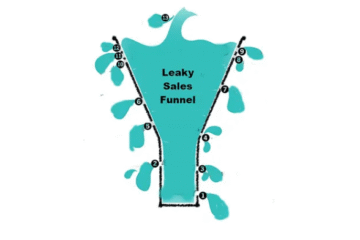Before You Buy Another Click: Run This Big-Idea Test and Kill the Losers
Before You Buy Another Click: Run This Big-Idea Test and Kill the Losers
Your ad account isn’t bleeding because CPC ticked up or the algorithm had a mood swing. It’s bleeding because “pretty good” ideas slipped past the gate. “Pretty good” creates impressions, not income. It eats budget quietly—one forgettable headline, one fuzzy promise, one soft call-to-action at a time—until you’re paying to send strangers to a shrug. The cure isn’t a new platform, new format, or a new attribution model. The cure is a ruthless pre-flight check that screens out weak concepts before they ever touch traffic.
What follows is the fastest, most unforgiving way I know to protect your budget: a five-minute, five-question Big-Idea Test you can run on any concept, in any channel, before you buy another click.
Why “Pretty Good” Costs a Fortune
“Pretty good” ideas don’t fail dramatically. They fail invisibly. They force you to compensate with frequency and spend. They rely on retargeting to do what the message should have done in the first place: make a complete stranger picture a personal payoff and move toward it.
Great ideas feel inevitable. One clear person. One vivid pain. One specific prize. One fresh mechanism that makes the promise believable. Proof you can feel. A clock that says “now,” and a safety net that lowers blood pressure. If your concept doesn’t check those boxes, media can’t save it. It only makes the failure more expensive.
The 5-Minute Big-Idea Test (Score 0–2 Per Question)
Grab a pen. Be ruthless. If you’re generous now, you’ll pay for it later.
One Person Do you call out a specific someone?
0 = everyone / nobody
1 = a broad segment
2 = a vivid “who” (e.g., B2B SaaS growth leads).
One Pain + One Payoff Can a stranger repeat the pain and prize in one breath?
0 = muddy
1 = one of the two is clear
2 = both are unmistakable (e.g., leaky funnels → double qualified demos).
One Fresh Mechanism What’s the named “how” that makes belief automatic?
0 = generic tactic
1 = tactic with a twist
2 = named mechanism (e.g., Intent-Lift Pages).
Proof You Can Feel Do you provide concrete, checkable evidence?
0 = vibes and adjectives
1 = one metric or testimonial
2 = mini-case, before/after numbers, or a quick demo.
Timeframe + Risk Reversal When does the payoff show up, and how is the risk reduced?
0 = someday
1 = soft window
2 = crisp clock + safety (e.g., 21 days, cancel anytime).
Scoring:
8–10: Green light. Build it.
5–7: Workshop it. Do not spend yet.
0–4: Kill it. Thank yourself later.
Tightening Passes: Turn “Meh” Into Money
Most failing concepts are a few edits from viable. Here’s the order of operations:
A. Sharpen the Who “Marketers” is fog. “SaaS growth leads whose demo no-shows are killing pipeline” is a face. Copy speaks to people, not markets.
B. Name the Mechanism People don’t buy generic “better ads” or “smarter pages.” They buy the thing that does the work. Give your how a name and a job: Intent-Lift Pages that pre-sell before the call. Names create memory; memory creates money.
C. Add Proof With a Pulse Numbers beat adjectives. Context beats numbers. “CPL down 41%” is nice; “Cold traffic CPL from $142 to $84 in 7 days” is persuasive.
D. Put a Clock on the Promise “Soon” is disbelief. “21 days” is a plan. Time focuses attention and gives you a legitimate reason to ask for action.
E. Move the Risk Off the Buyer If the buyer carries all the risk, they stall. Offer a safety net you can honor profitably—cancel anytime, milestone-based billing, “we eat setup if we miss KPI.”
If you want help generating big ideas and prefer to kill the weaker ones, then contact me.




